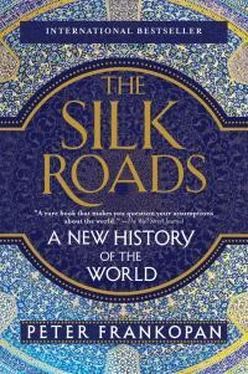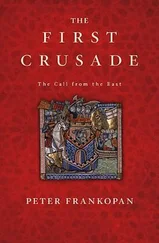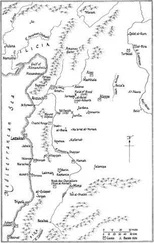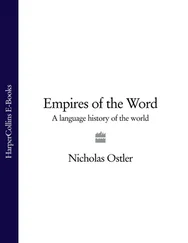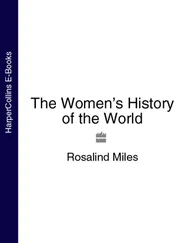Nevertheless, this was a rare setback that did not stall Persia’s expansion. Greek commanders looked east with a combination of fear and respect, seeking to learn from the Persians’ tactics on the battlefield and to adopt their technology. Authors like Aeschylus used successes against the Persians as a way of celebrating military prowess and of demonstrating the favour of the gods, commemorating heroic resistance to the attempted invasions of Greece in epic plays and literature.10
“I have come to Greece,” says Dionysus in the opening lines of the Bacchae , from the “fabulously wealthy East,” a place where Persia’s plains are bathed in sunshine, where Bactria’s towns are protected by walls, and where beautifully constructed towers look out over coastal regions. Asia and the East were the lands that Dionysus “set dancing” with the divine mysteries long before those of the Greeks.11
* * *
None was a keener student of such works than Alexander of Macedon. When he took the throne in 336 BC following the assassination of his father, the brilliant King Philip, there was no question about which direction the young general would head in his search for glory. Not for a moment did he look to Europe, which offered nothing at all: no cities, no culture, no prestige, no reward. For Alexander, as for all ancient Greeks, culture, ideas and opportunities—as well as threats—came from the east. It was no surprise that his gaze fell on the greatest power of antiquity: Persia.
After dislodging the Persian governors of Egypt in a lightning strike in 331 BC, Alexander set off for an all-out assault on the empire’s heartlands. The decisive confrontation took place later in 331 on the dusty plains of Gaugamela, near the modern town of Erbil in Iraqi Kurdistan, where he inflicted a spectacular defeat on the vastly superior Persian army under the command of Darius III—perhaps because he was fully refreshed after a good night’s sleep: according to Plutarch, Alexander insisted on resting before engaging the enemy, sleeping so deeply that his concerned commanders had to shake him awake. Dressing in his favoured outfit, he put on a fine helmet, so polished that “it was as bright as the most refined silver,” grasped a trusted sword in his right hand and led his troops to a crushing victory that opened the gates of an empire.12
Tutored by Aristotle, Alexander had been brought up with high hopes resting on his shoulders. He did not disappoint. After the Persian armies had been shattered at Gaugamela, Alexander advanced east. One city after another surrendered to him as he took over the territories controlled by his defeated rivals. Places of legendary size, wealth and beauty fell before the young hero. Babylon surrendered, its inhabitants covering the road leading to the great city with flowers and garlands, while silver altars heaped with frankincense and perfumes were placed on either side. Cages with lions and leopards were brought to be presented as gifts.13 Before long, all the points along the Royal Road that linked the major cities of Persia and the communication network that connected the coast of Asia Minor with Central Asia had been taken by Alexander and his men.
Although some modern scholars have dismissed him as a “drunken juvenile thug,” Alexander appears to have had a surprisingly delicate touch when it came to dealing with newly conquered territories and peoples.14 He was often emollient when it came to local religious beliefs and practices, showing tolerance and also respect: for example, he was reportedly upset by the way the tomb of Cyrus the Great had been desecrated, and not only restored it but punished those who had defiled the shrine.15 Alexander ensured that Darius III was given a funeral befitting his rank and buried alongside other Persian rulers after his body had been found dumped in a wagon following his murder by one of his own lieutenants.16
Alexander was also able to draw more and more territory under his sway because he was willing to rely on local elites. “If we wish not just to pass through Asia but to hold it,” he is purported to have said, “we must show clemency to these people; it is their loyalty which will make our empire stable and permanent.”17 Local officials and old elites were left in place to administer towns and territories that were conquered. Alexander himself took to adopting traditional titles and wearing Persian clothing to underline his acceptance of local customs. He was keen to portray himself not so much as an invading conqueror, but as the latest heir of an ancient realm—despite howls of derision from those who told all who would listen that he had brought misery and soaked the land with blood.18
It is important to remember that much of our information about Alexander’s campaigns, successes and policies derives from later historians, whose accounts are often highly idealised and breathless with enthusiasm in the coverage of the young general’s exploits.19 Nevertheless, even if we need to be cautious about the way the collapse of Persia is covered in the sources, the speed with which Alexander kept extending the frontiers further east tells its own story. He was an energetic founder of new cities, usually named after himself, that are now more often known by other names, such as Herat (Alexandria in Aria), Kandahar (Alexandria in Arachosia) and Bagram (Alexandria ad Caucasum). The construction of these staging posts—and the reinforcement of others further north, stretching to the Fergana valley—were new points running along the spine of Asia.
New cities with powerful defences, as well as standalone strongholds and forts, were primarily built to defend against the threat posed by tribes of the steppes who were adept at launching devastating attacks on rural communities. Alexander’s programme of fortification was designed to protect new areas that had only recently been conquered. Similar concerns met with similar responses further east at precisely this time. The Chinese had already developed a concept of huaxia , representing the civilised world, set against the challenges of the peoples from the steppes. An intensive building programme expanded a network of fortifications into what became known as the Great Wall of China, and were driven by the same principle as that adopted by Alexander: expansion without defence was useless.20
Back in the fourth century BC, Alexander himself continued to campaign relentlessly, circling back through the Hindu Kush and marching down the Indus valley, again founding new strongholds with garrisons—although by now meeting with regular cries of protest from his weary and homesick men. From a military perspective, his achievements by the time he died at the age of thirty-two in Babylon in 323 BC, in circumstances that remain shrouded in mystery, were nothing short of sensational.21 The speed and extent of his conquests were staggering. What was no less impressive—though much more often ignored—is the scale of the legacy he left behind, and how the influences of ancient Greece blended with those of Persia, India, Central Asia and eventually China too.
Although Alexander’s sudden death was followed by a period of turbulence and infighting between his senior commanders, a leader soon emerged for the eastern half of the new territories: an officer born in northern Macedonia named Seleucus who had taken part in all the king’s major expeditions. Within a few years of his patron’s death, he found himself governor of lands that stretched from the Tigris to the Indus river; the territories were so large that they resembled not a kingdom but an empire in its own right. He founded a dynasty, known as the Seleucids, that was to rule for nearly three centuries.22 Alexander’s victories are often and easily dismissed as a brilliant series of short-term gains, his legacy widely thought of as ephemeral and temporary. But these were no transitory achievements; they were the start of a new chapter for the region lying between the Mediterranean and the Himalayas.
Читать дальше
